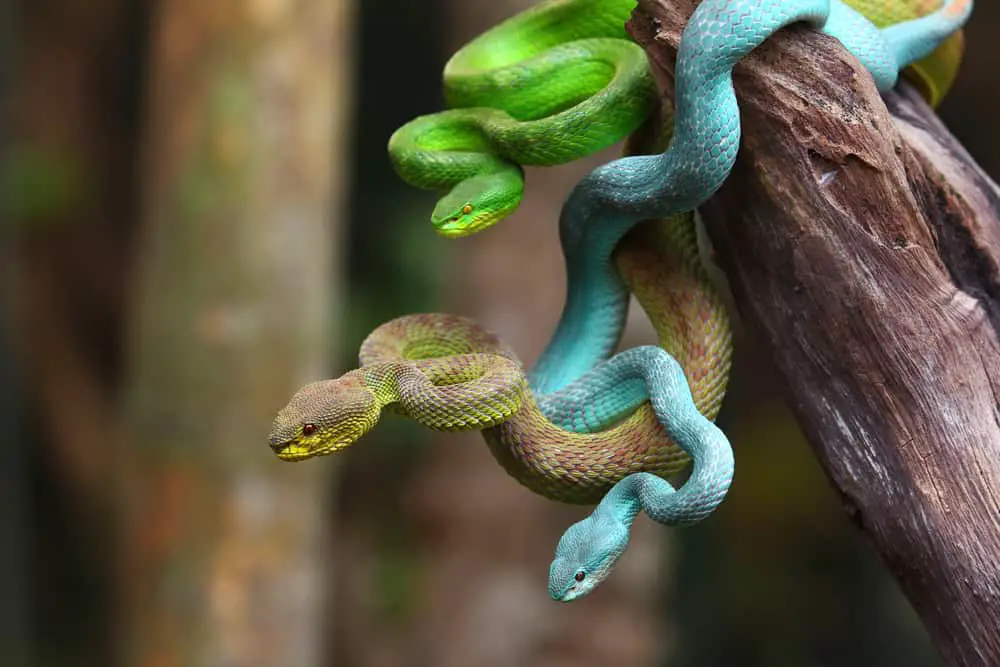
There are many different types of snakes. They can be found all over the world, in the wild or kept as pets. These animals have been around on this planet for much longer than humans, and they are fascinating.
Whether you’re just curious or are looking to own one of these precious animals, this article contains all the information you may need on these four popular types of snakes.
Table of Contents
1. Python
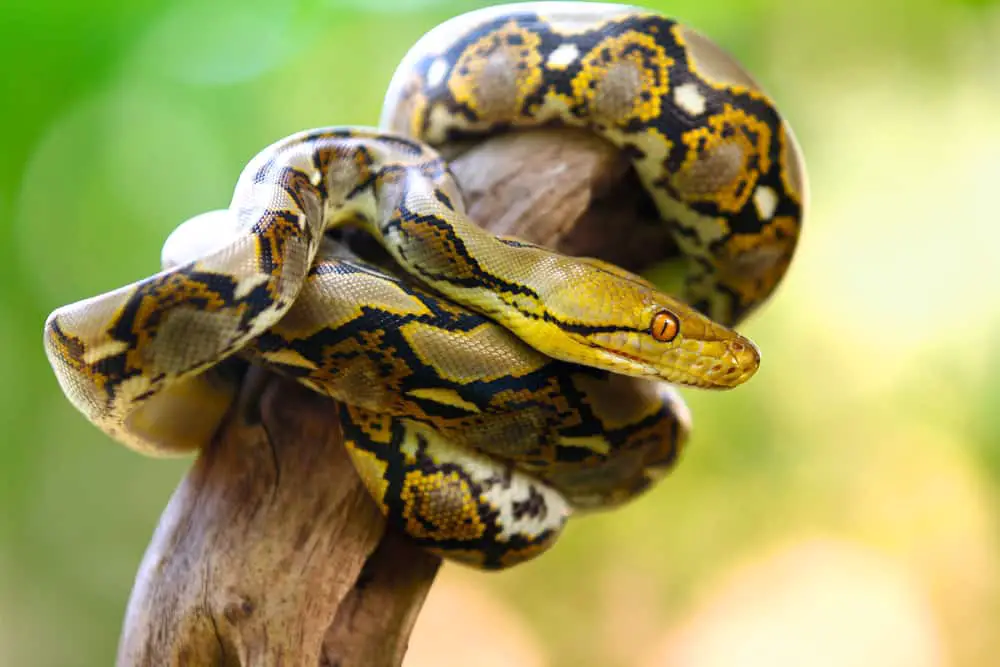
The Pythonidae family includes some of the largest snakes in the world. There are currently 41 species in the family, and they live across three continents and are considered to be Old World snakes.
These snakes are constrictors, much like the boa constrictor.
Appearance
The coloring and size of a python vary from one species of python to another. The coloration and patterning can range from elaborately patterned scales to solid colors such as brown or green. This is dependent on their habitats and the need for camouflage.
Habitat
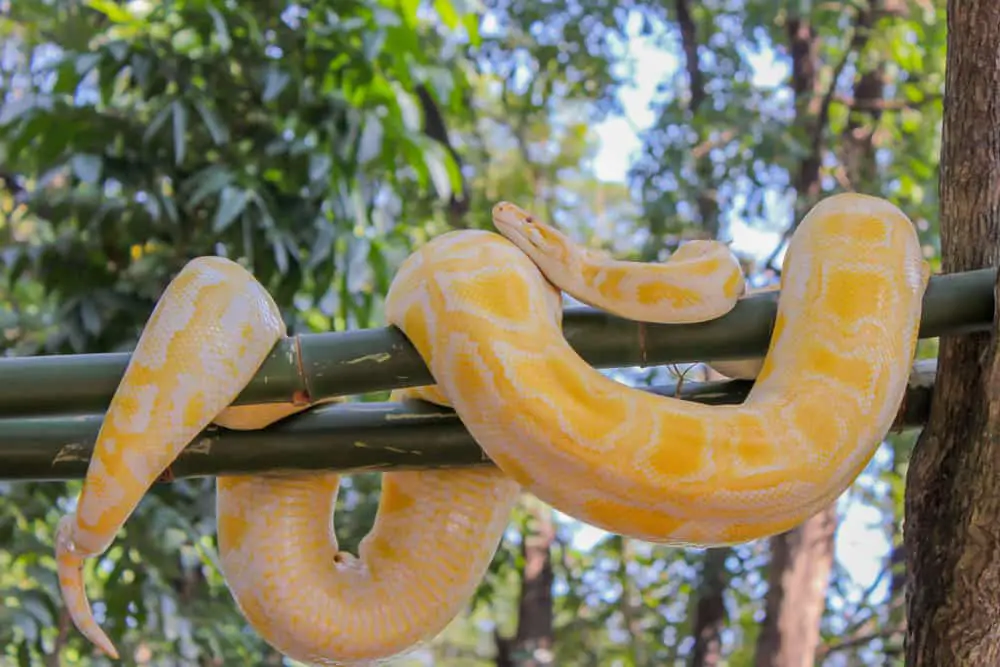
Pythons like warm, rainy regions like those found in Africa, Asia, and Australia. Rain forests are home to many species, but pythons may also be found in grasslands, woods, marshes, rocky outcrops, dunes, and shrubs. Depending on the species, pythons seek refuge in hollows, beneath rocks, abandoned animal burrows, and tree branches.
One species of python has found its home in the Western Hemisphere, despite being native to the Old World. The Burmese python is an invasive species that has been identified in the Florida Everglades, where it is successfully reproducing.
Life Expectancy
The life expectancy of a python is around 25 years. The San Diego Zoo has said that their maximum life expectancy is 35 years of age.
Diets
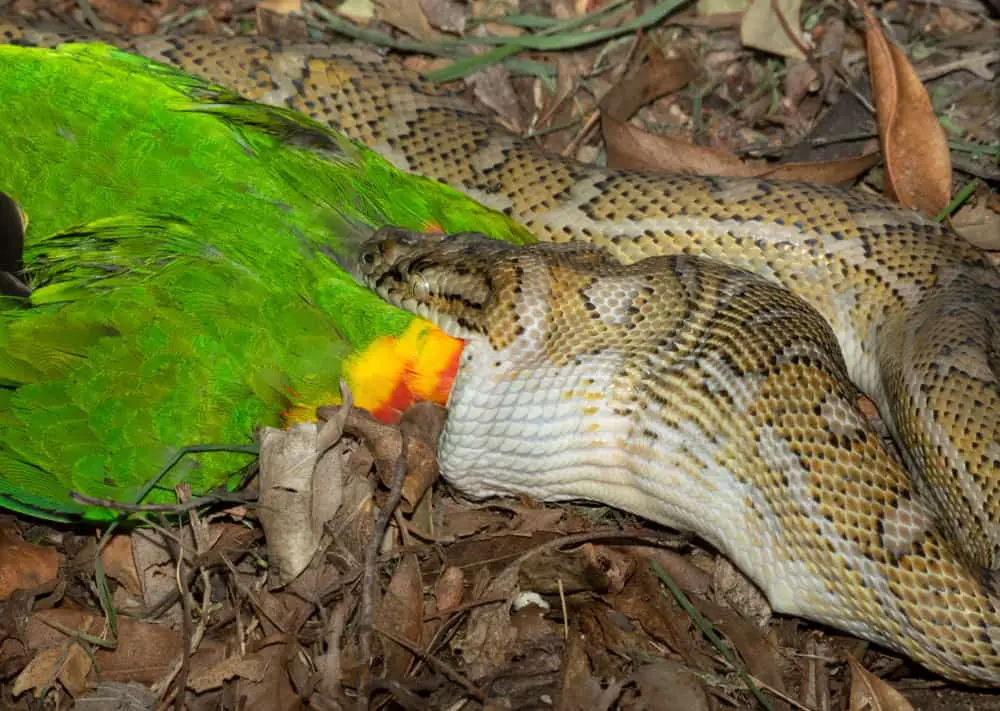
Pythons eat a variety of foods according to their size. Rodents, lizards, and small birds are the main prey of smaller pythons. Monkeys, wallabies, antelope, and pigs are among the animals eaten by larger species of pythons. The large reticulated python has also been reported to attack people. However, this is extremely rare and improbable.
Movement
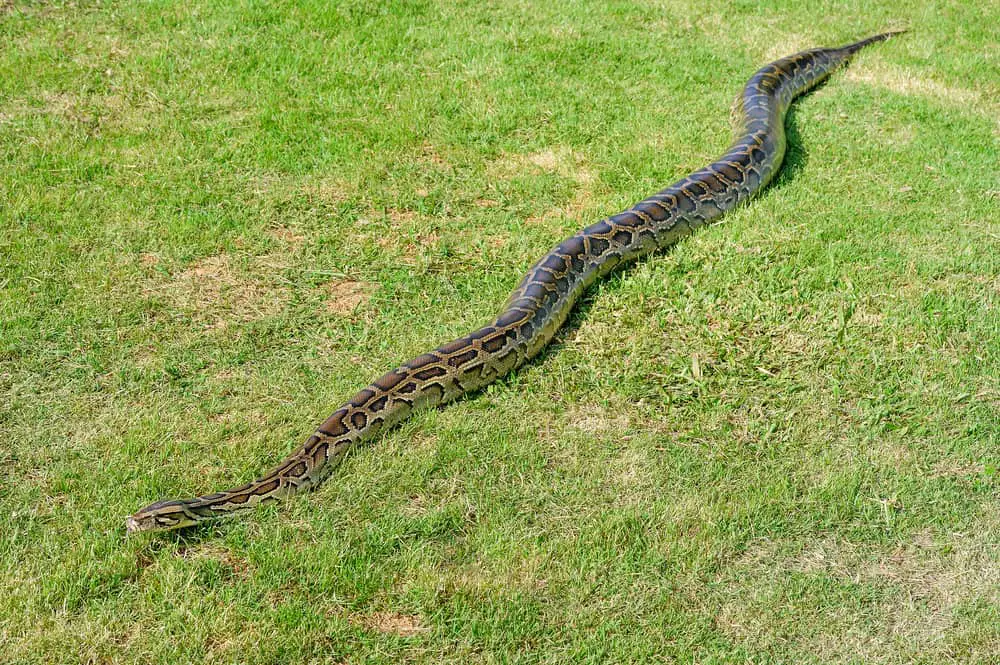
Pythons move by scooting forward in a straight path due to their weight. This type of movement is known as rectilinear progression movement. Pythons raise their belly and propel themselves forward by stiffening their ribs against the ground for support.
Since this way of moving doesn’t allow them to move very quickly, pythons can only travel at a speed of one mile per hour.
Hunting
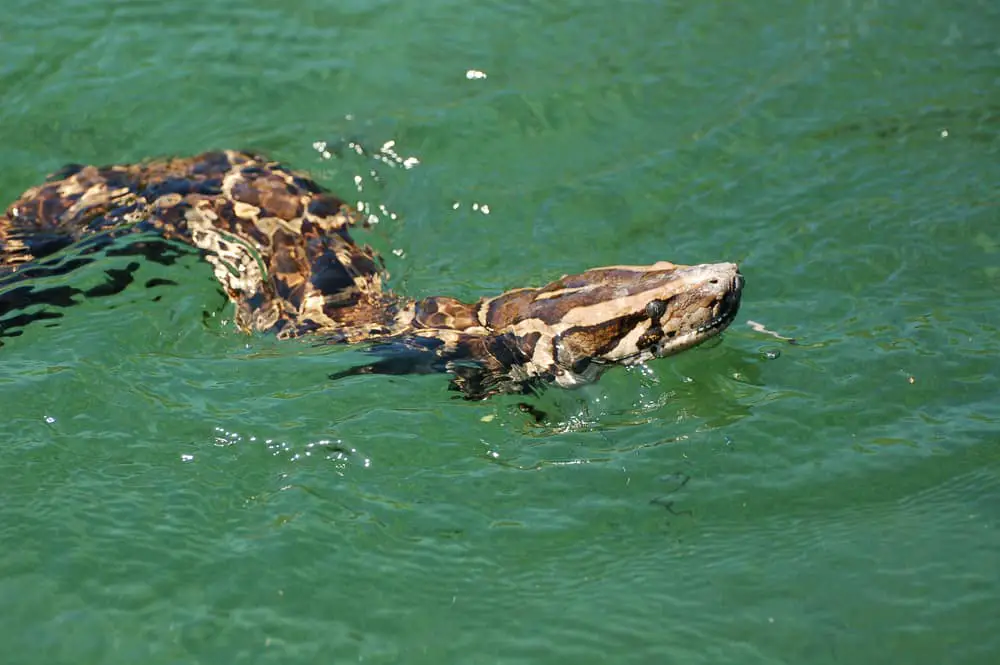
Many python species are good swimmers, while others are arboreal, meaning they use their prehensile tails to hang on branches.
It is a widely believed myth that arboreal pythons leap from branches to catch food below. The snake might be seriously injured as a result of this. To attract their prey, they lie motionless on a branch and wiggle their tails. While still in the tree, they attack.
Pythons kill their prey through constriction after grabbing it in their long jaws. Constriction, contrary to common perception, does not imply crushing. Pythons and other constricting snakes do not shatter their prey’s bones with their power.
Many experts believe that pythons suffocate their victim by compressing its ribcage and preventing it from breathing.
When their prey is dead, pythons open their jaws slowly and consume it entirely, headfirst. Pythons produce mucus that includes harmless trace quantities of venom proteins while eating prey.
After finishing their meal, pythons relax in a warm spot to aid digestion.
Reproduction
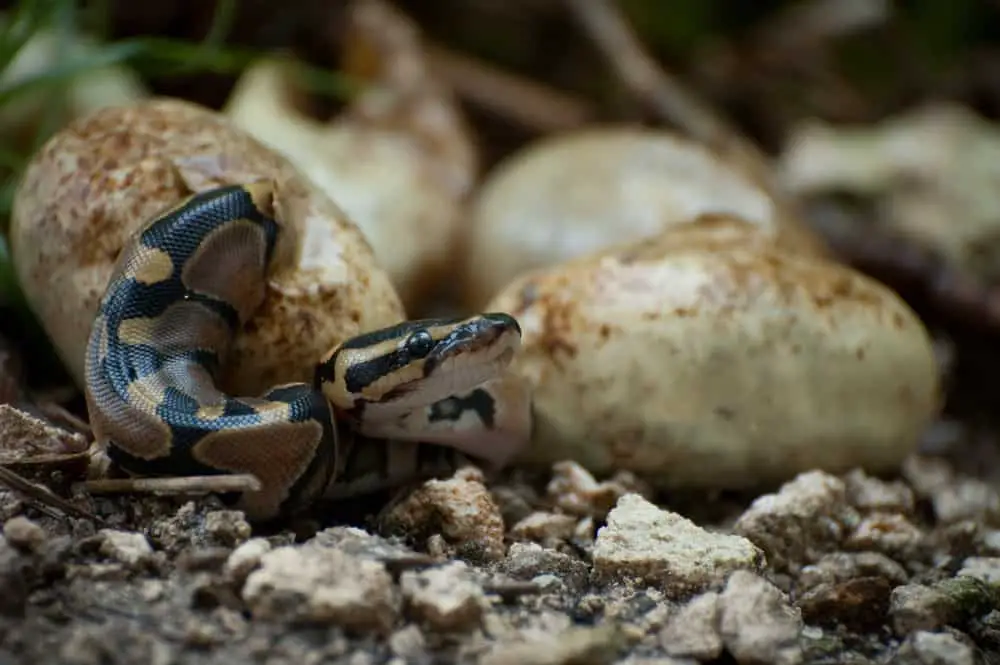
Pythons reproduce by depositing eggs that are fertilized by the male. After 2 to 4 months, the eggs hatch, and the infants are allowed to fend for themselves. When the female of most snakes reproduces, she abandons the eggs until they hatch. However, some pythons stay with their clutch until they hatch.
The breeding season for pythons varies depending on the species. Male pythons utilize their vestigial limbs to massage the female during courtship.
Most Common Species
The most common species of pythons are:
- Ball python
- Reticulated python
- Burmese python
- Carpet python
2. Cobras
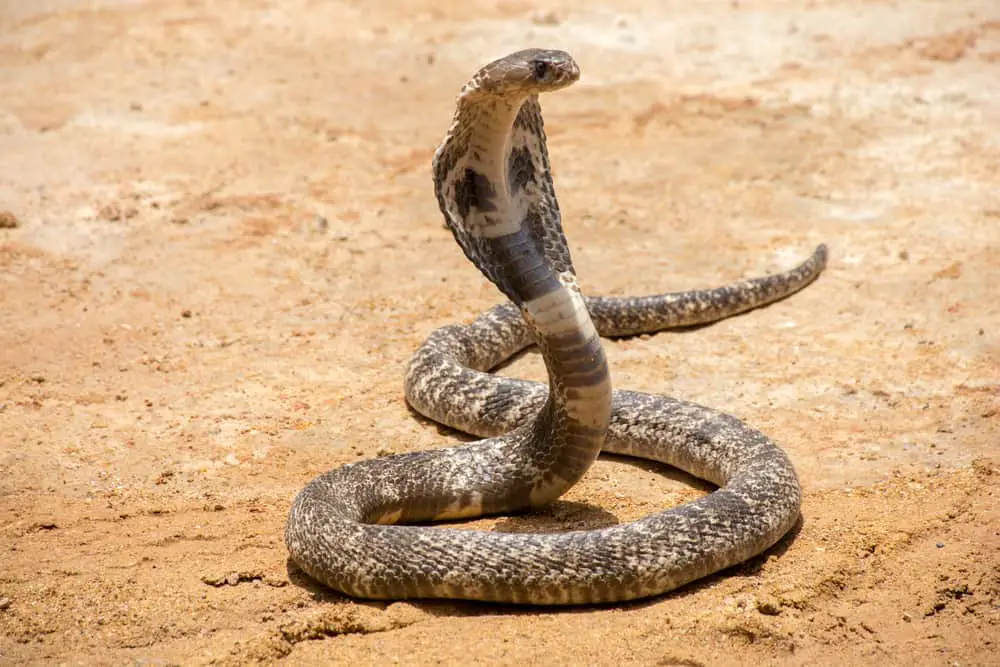
Cobras are some of the most recognizable snakes on the planet, with their menacing hoods and intimidating upright stances. Their grace, arrogance, and deadly bite have earned them admiration as well as terror.
There is significant debate over what a cobra is, and the number of cobra species varies from 28 to around 270, depending on how one defines a cobra. True cobras are members of the genus Naja, although the term cobra can refer to numerous species of snakes, the majority of which are in the venomous snake family Elapidae.
Other snakes in the Elpididae family include coral snakes, kraits, and mambas. Many of these snakes have hoods or the capacity to lift the top half of their bodies.
Appearance
Colors differ greatly across species. Cobras come in a variety of hues and patterns, including red, yellow, black, mottled, banded, and many others.
Cobras are huge snakes that may grow to be over 6 feet long. The Mozambique spitting cobra, which is around 4 feet long, is the smallest of the species. The longest of all venomous snakes, the king cobra, may grow to be 18 feet long.
The hood of a cobra is the most well-known distinguishing physical feature.
Habitat
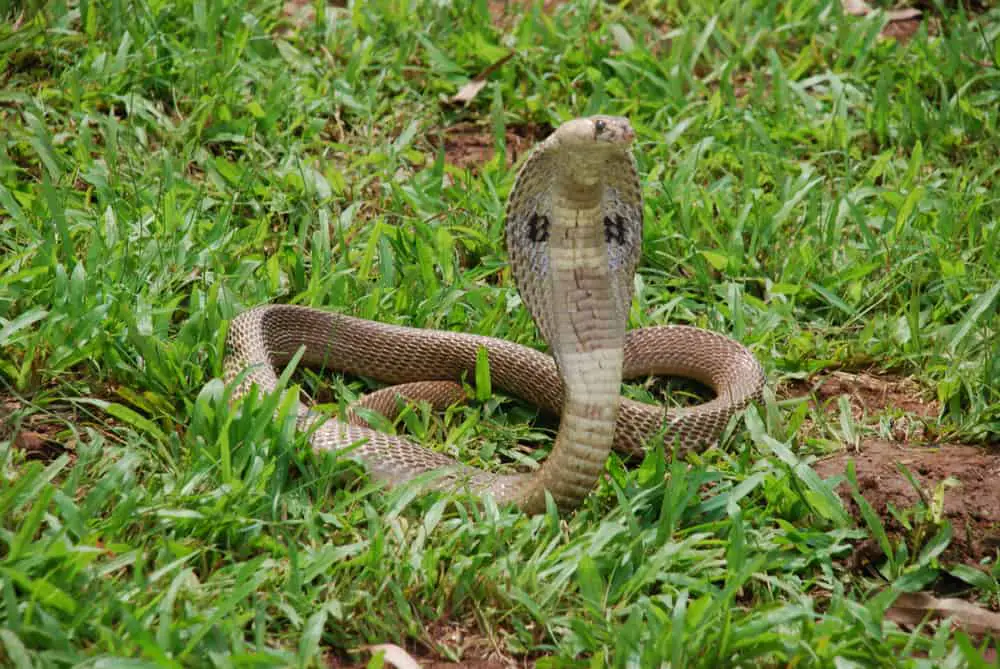
Cobras are most commonly found in hot, tropical environments, although they may also be found in Africa and Southern Asia in savannahs, grasslands, woods, and farming areas. They like to spend their time underground, in caves, under rocks, and in trees.
The rain forests and plains of India, southern China, and Southeast Asia are home to king cobras, and their coloration varies significantly from place to region. Forests, bamboo thickets, mangrove swamps, high-altitude meadows, and rivers are among their favorite places to live.
Life Expectancy
The average life expectancy of a cobra is between 17 and 20 years. The maximum lifespan is for a cobra is around 25 years.
Diet
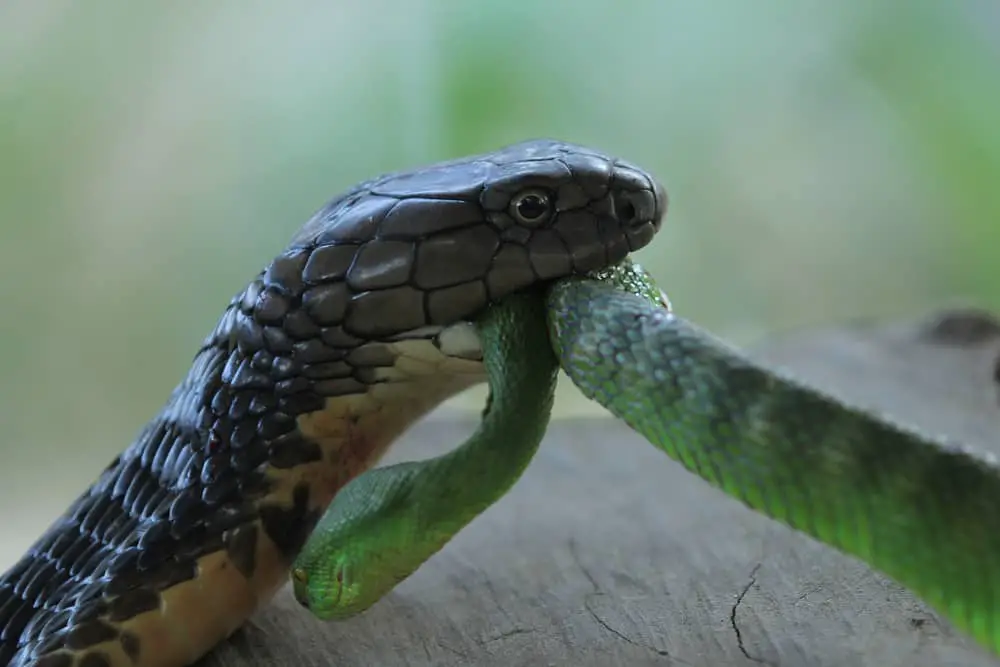
It all depends on the age, size, and activity level of your snake. Snakes that are smaller or younger eat twice a week, whereas larger, more adult snakes eat once or twice a week. Feeding female snakes more regularly as mating season approaches is a good idea.
This species feeds mostly on venomous and nonvenomous snakes. Lizards, eggs, and small animals are also on their menu.
Behavior
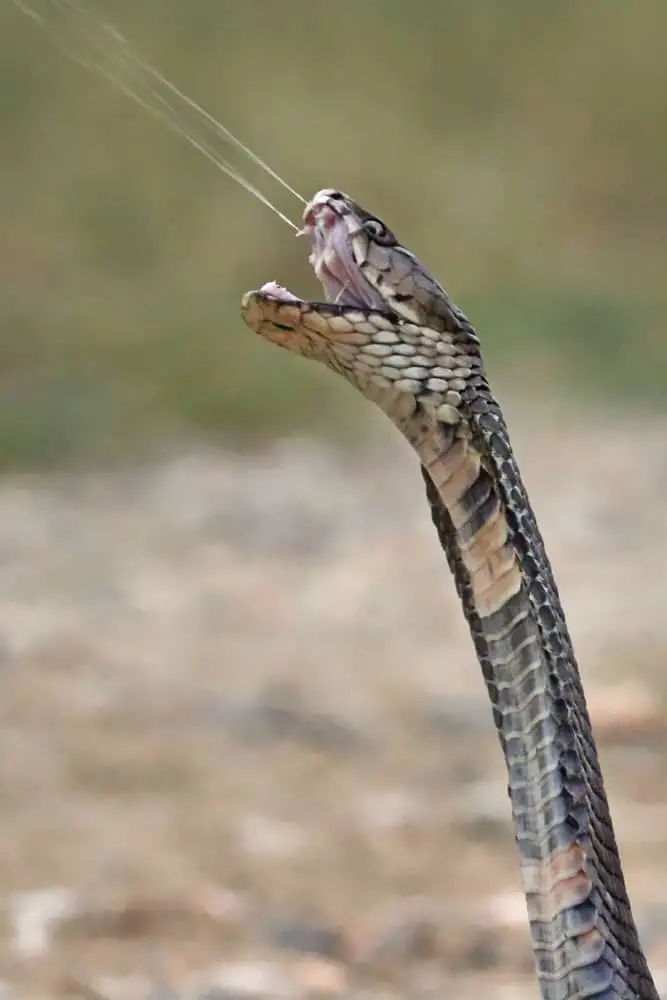
Cobras’ most distinguishing behavioral traits are their defensive displays. Hooding, hissing, and elevating the upper half of their bodies to stand tall are examples of these behaviors. Cobras may grow to be a third of their body length tall.
This behavior not only indicates a desire to attack but also aids them in their quest for food. Cobras hiss loudly at predators and other potential threats, and some species spit. Spitting cobras have the ability to discharge poison from their teeth towards prey.
Reproduction
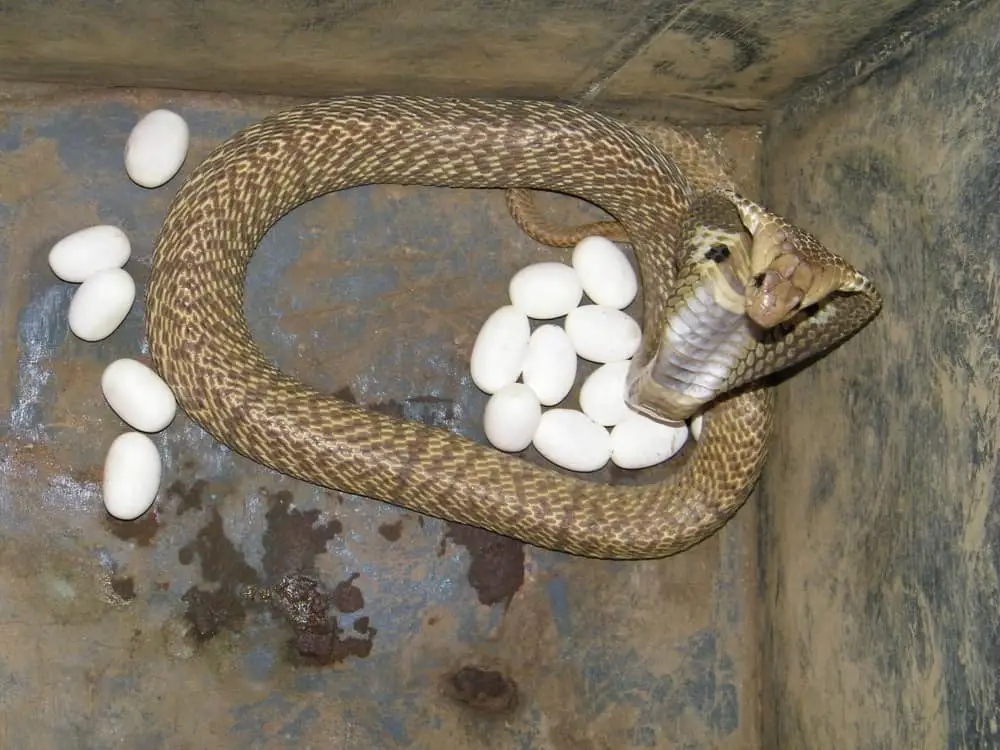
Cobras reproduce by depositing eggs in the ground. Females generally lay 20 to 40 eggs at a time, which take 60 to 80 days to incubate. Cobras will stay near the eggs and guard them until they hatch. Cobra eggs are commonly stolen by wild boars and mongooses.
Hunting
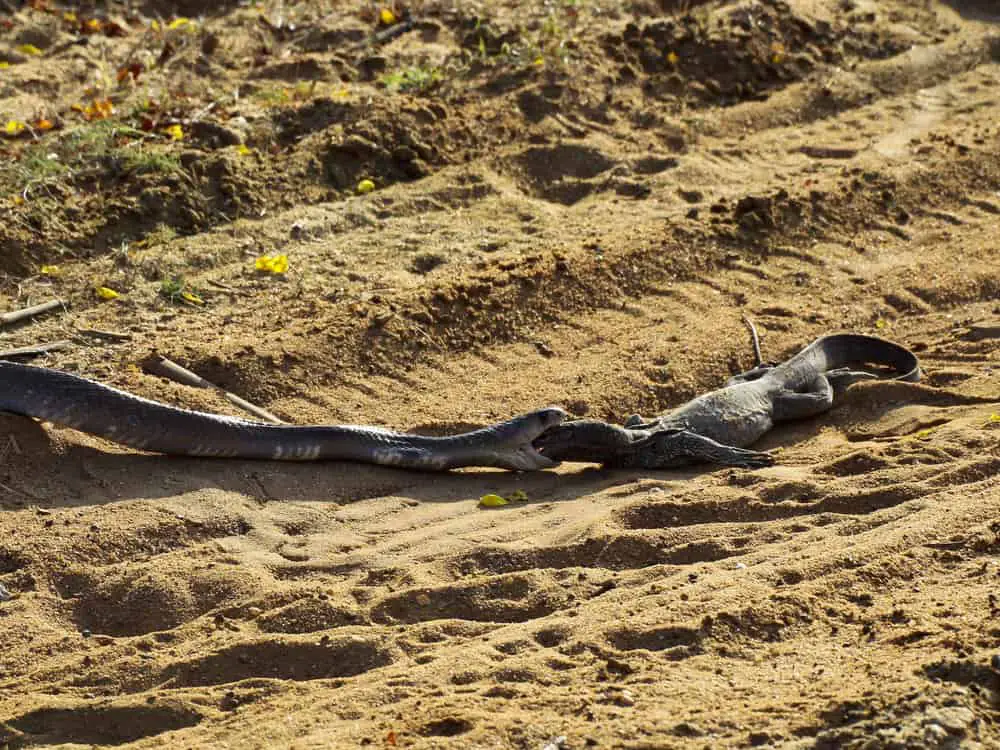
Cobras are opportunistic predators who eat everything they can get their hands on. Birds, small animals, lizards, eggs, carrion, and other snakes are frequently eaten. They slither stealthily through the woods, stalking their victim until they’re ready to strike. Most cobras hunt around dawn or dusk, according to the San Diego Zoo, while certain species feed during the day.
Cobras, like other snakes, have a sluggish metabolism that permits them to go days, if not months, without eating.
Threats and Enemies
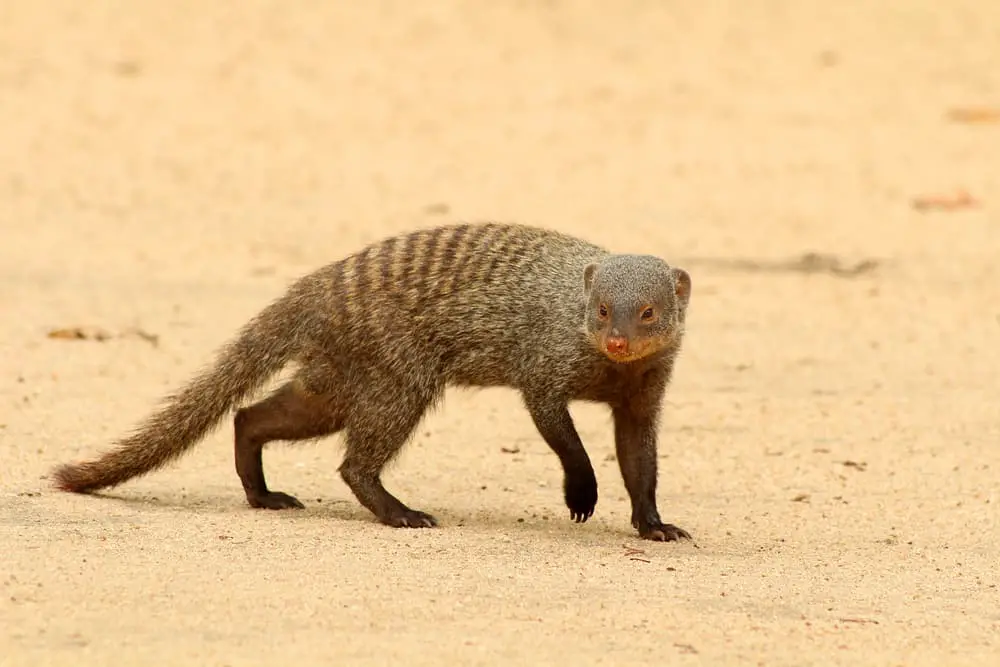
Like other animals, cobras have natural threats and enemies in the wild.
The mongoose is the cobra’s most well-known foe. Mongooses have thick fur to shield themselves from cobra teeth, and they frequently defeat cobras in battles due to their speed and agility. They can bite the back of the cobra before the snake has even had a chance to defend itself.
Other snakes and people also pose a hazard to cobras.
Cobra Bite
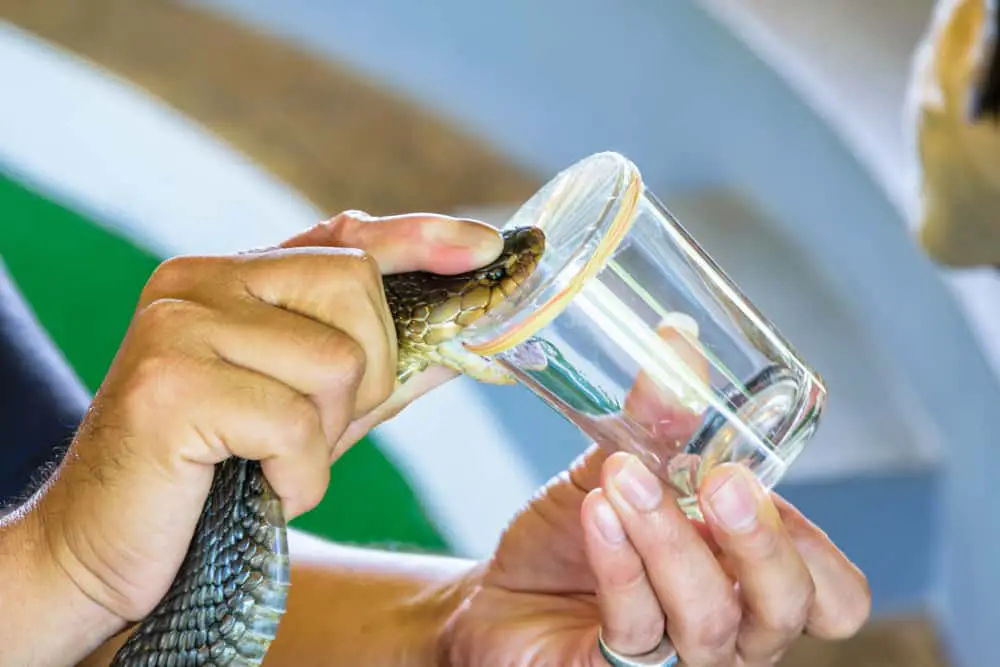
Unlike pythons, cobras are venomous snakes, and their bites can be dangerous to animals and humans alike.
Cobra bites may be lethal if not treated promptly. Fortunately, antivenom is available, and mechanical respirators can occasionally save lives. Cobras, like coral snakes, contain neurotoxic venom that affects the neurological system.
Symptoms of a cobra bite include:
- Vision difficulties
- Trouble eating and speaking
- Skeletal muscle weakness
- Difficulty breathing
- Respiratory failure
- Vomiting
- Abdominal discomfort
- Necrosis
- Anticoagulation
Human victims may stop breathing 30 minutes after being bitten by a cobra.
The venom of some cobras, including all spitting cobras, is cytotoxic, meaning it destroys bodily tissue and causes extreme pain, swelling, and necrosis. Cobras have the frightening ability to spray venom from their teeth straight into the victim’s eyes. If the cobra venom is not properly cleaned out of your eyes, it may cause blindness.
3. Vipers
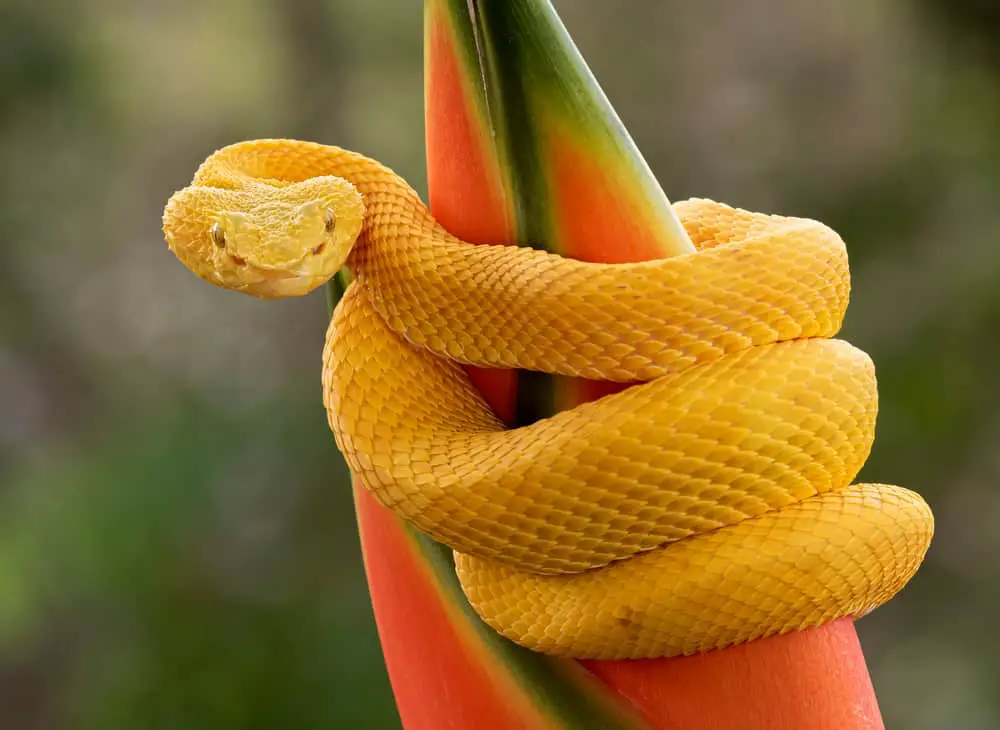
Vipers are a big snake family. Viperidae is their scientific name. With the exception of Antarctica, Australia, New Zealand, Madagascar, areas north of the Arctic Circle, and island clusters such as Hawaii, vipers may be found everywhere over the world.
Vipers have long fangs and are venomous snakes. Tropical locations, notably South America and Africa, have more poisonous vipers. The venom of vipers located in colder, northern regions, such as the black or European adder, is milder.
There are more than 200 species of viper.
Appearance
Vipers are usually stocky snakes with short tails. They vary in size, according to the type of viper, as well as their habitat region.
Head Shape
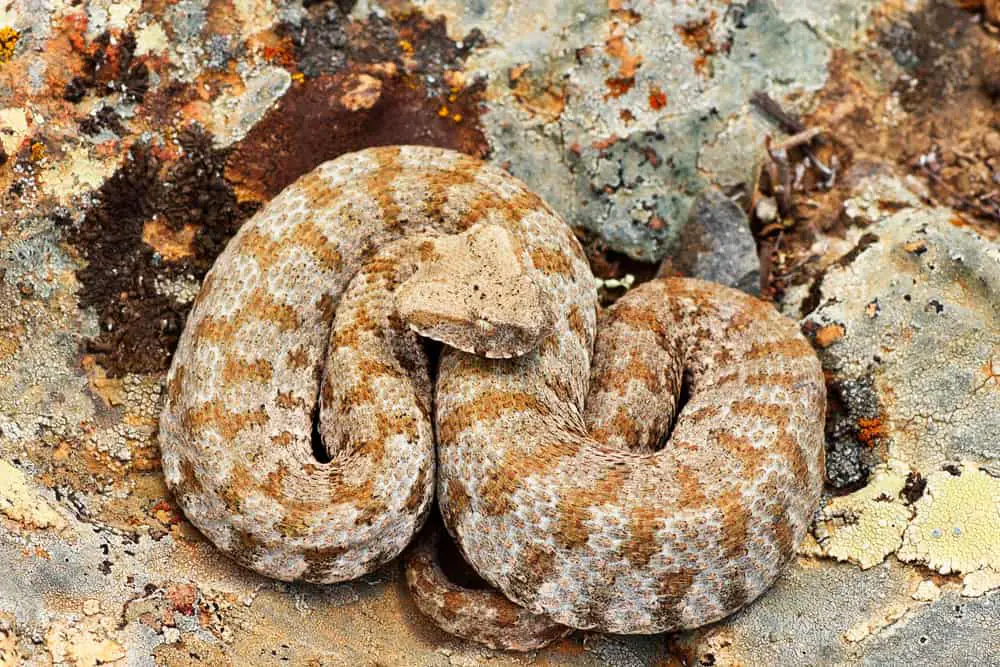
The heads of almost all vipers are triangular in shape.
The location of their enormous venom glands in the mouth is what gives them their distinctive head form. Nonvenomous animals have developed similar-looking heads to fool predators into believing they’re vipers.
In addition to their characteristic head shape, most vipers feature keeled scales, vertically elliptical pupils, and camouflage colors and patterns.
Fangs
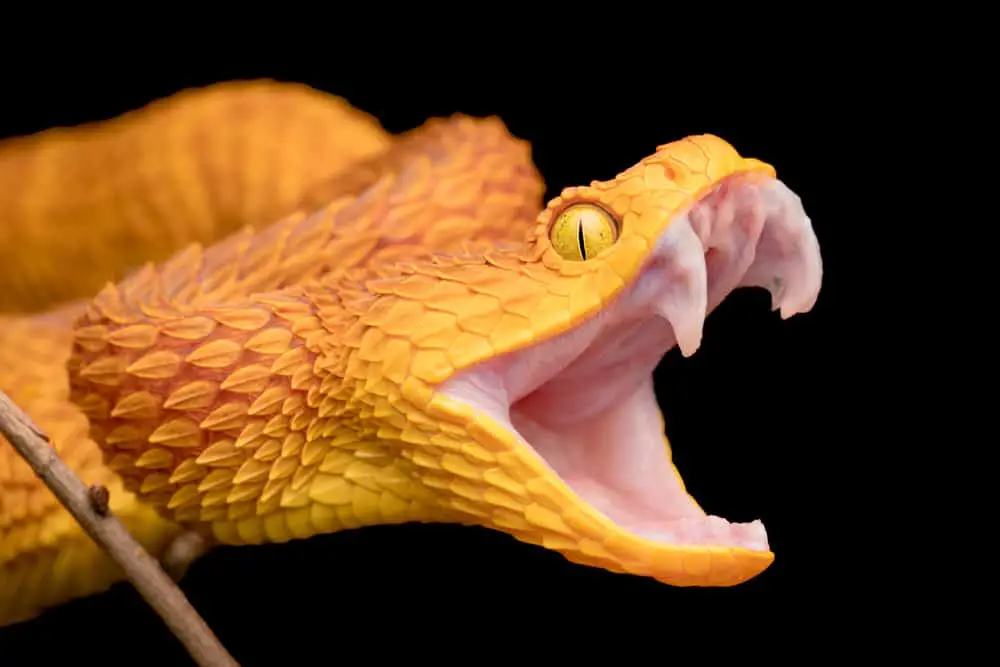
Vipers are known for their long, hollow fangs that are hinged and rotating. These fangs link to venom glands in the back upper portion of the jaw, behind the eyes. As the viper bites, venom flows down via the hollow teeth and is injected into the victim.
Vipers may spin their fangs either at the same time or separately, allowing them to extend their fangs at the last possible moment. Because their mouths can open almost 180 degrees, being able to spin their fangs inside that area is beneficial. The hinged fangs of vipers fold up and rest against the snake’s mouth roof when not in use. As a result, their fangs may become rather long.
Vipers may bite without injecting poison by extending their fangs and biting, which is known as a dry bite. A dry bite is a typical occurrence in human snakebites. Vipers can save their prior venom with dry bites, which can run out and take a long time to replace.
Habitat
These snakes may be found from the United States to Central and South America. Eurasia, Africa, and numerous islands are also home to them. Some even go as far north as the Arctic Circle. Only a select handful of places are not inhabited by vipers, including Australia, Antarctica, and Siberia.
Behavior
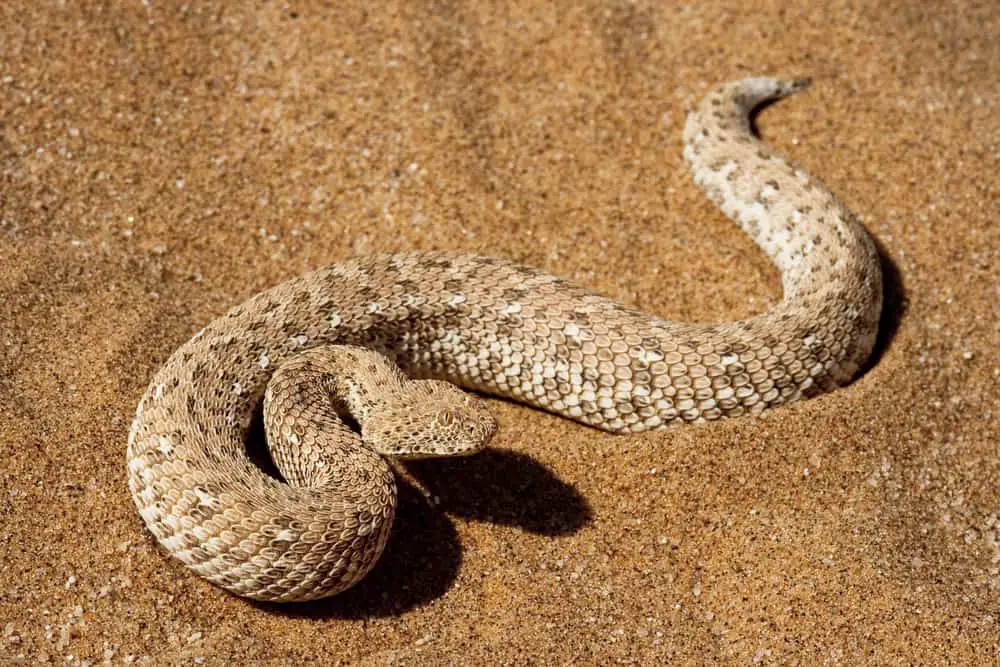
Vipers are usually active at night. They may appear to move slowly in comparison to other snakes. This is due to the fact that many vipers rely on their camouflage rather than their ability to move fast for safety. When confronted by a predator, they prefer to blend in with the surrounding foliage, boulders, or ground cover rather than crawl away.
Diet
Vipers eat a variety of food depending on the size of the snake. Viper prey includes small mammals, birds, lizards, and eggs. Once they have killed their prey, they consume it whole.
Hunting
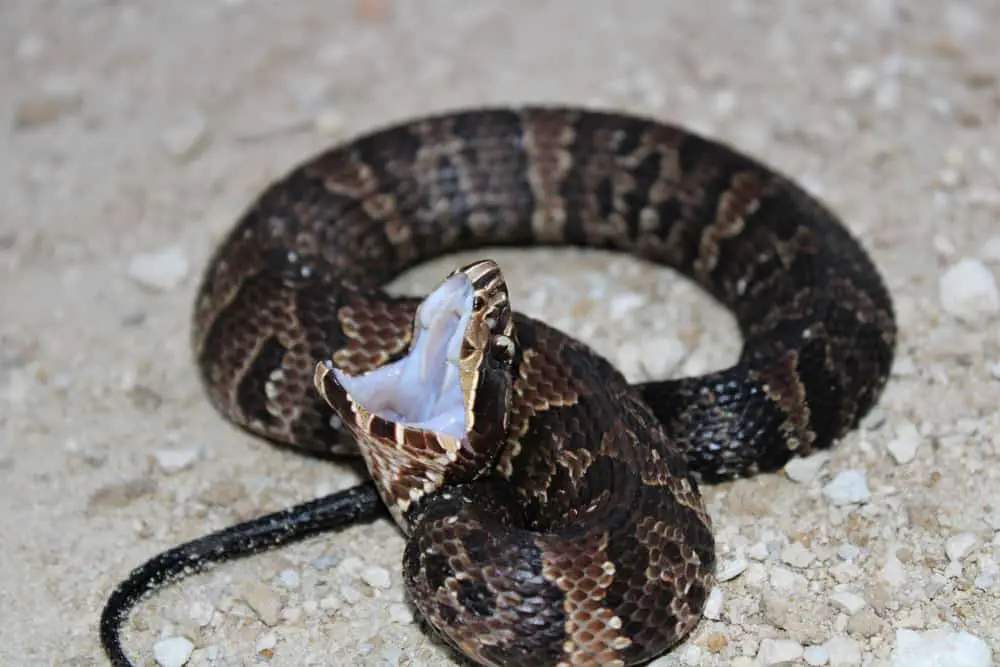
Vipers have a quick strike. Africa’s puff adder can strike at a speed of a quarter of a second.
Their hunting techniques are influenced by their perceived sluggishness. The majority of vipers hunt in ambush. They use chemical detection to determine where prey is most likely to be and then wait.
Vipers can afford to use this hunting technique since they don’t use a lot of energy, have a low resting metabolic rate, and eat less frequently but consume larger prey.
Prey relocation is a hunting technique used by vipers. This implies that after they’ve found their victim, they attack and inject poison into it.
They then release their prey, preventing it from biting back. The bitten prey walks away, dies, and the viper tracks it down using its sharp sense of smell.
Reproduction
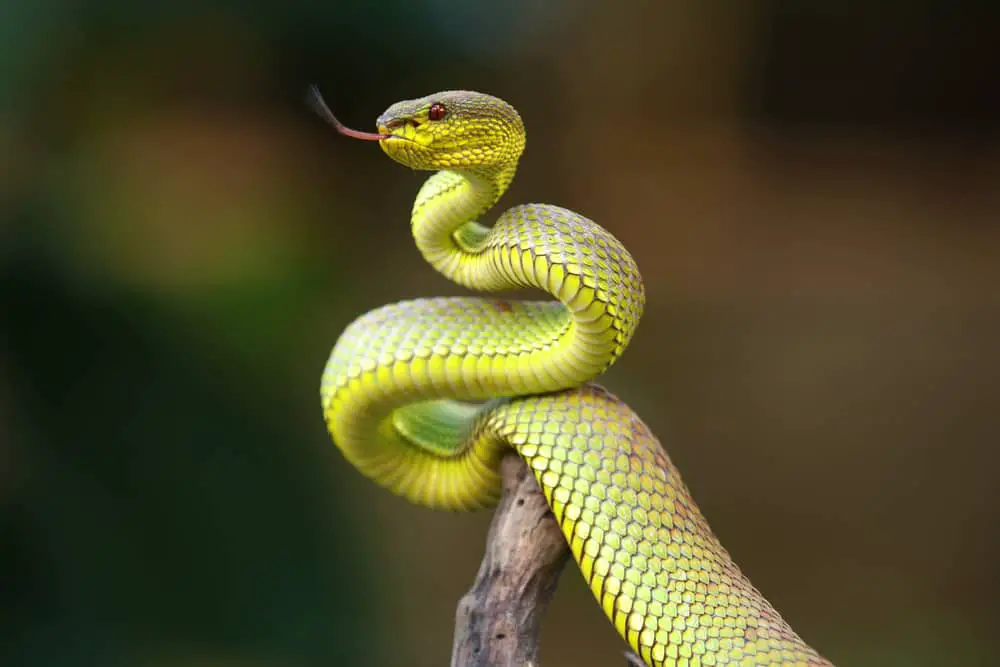
The majority of vipers are ovoviviparous, which means that their eggs are fertilized and incubated inside the mother, who then gives birth to live offspring. Some basal Asian pit vipers and New World vipers, on the other hand, do not share this trait.
The mating season, activity, and incubation time of vipers differ depending on the species.
Viper Bite
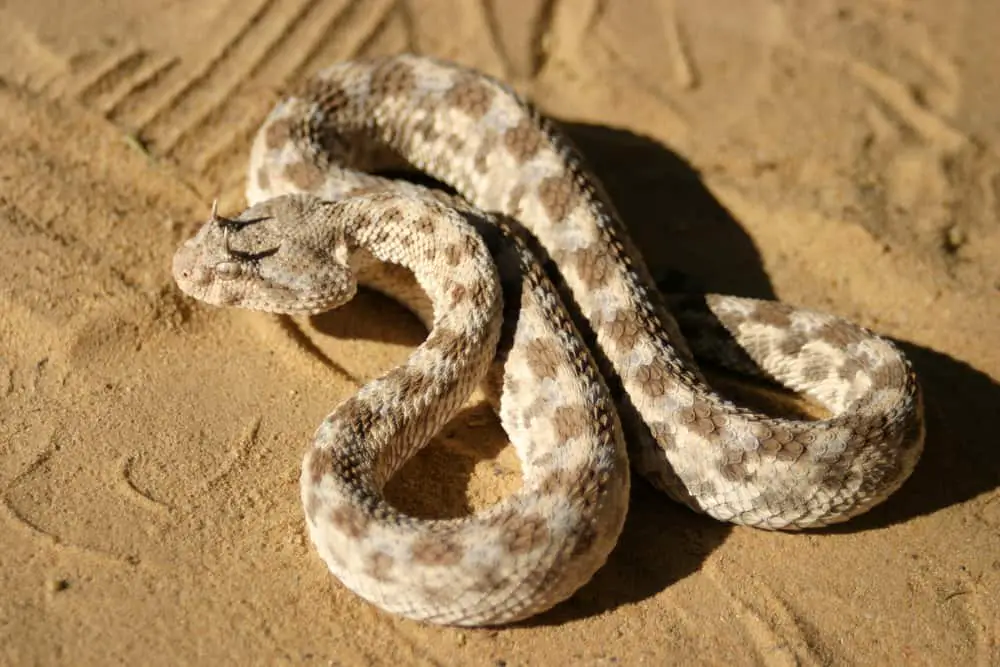
The severity of a viper bite is determined by the species and whether the bite was wet or dry, with no venom.
Vipers contain enzymatic venom that affects a wide range of tissues in the body. It produces severe swelling, agony, and necrosis, or the death and destruction of cells. It also has anticoagulant properties.
A significant drop in blood pressure typically results in death. All viper bites should be taken seriously and treated by a doctor very away. Viper venom helps vipers digest their food in addition to killing prey and hurting predators.
Because vipers swallow their prey whole, digesting it is a difficult task made more difficult by their digestive systems’ inefficiency. During digestion, the venom breaks down lipids, acids, and proteins in their prey.
Effects of a Viper Bite
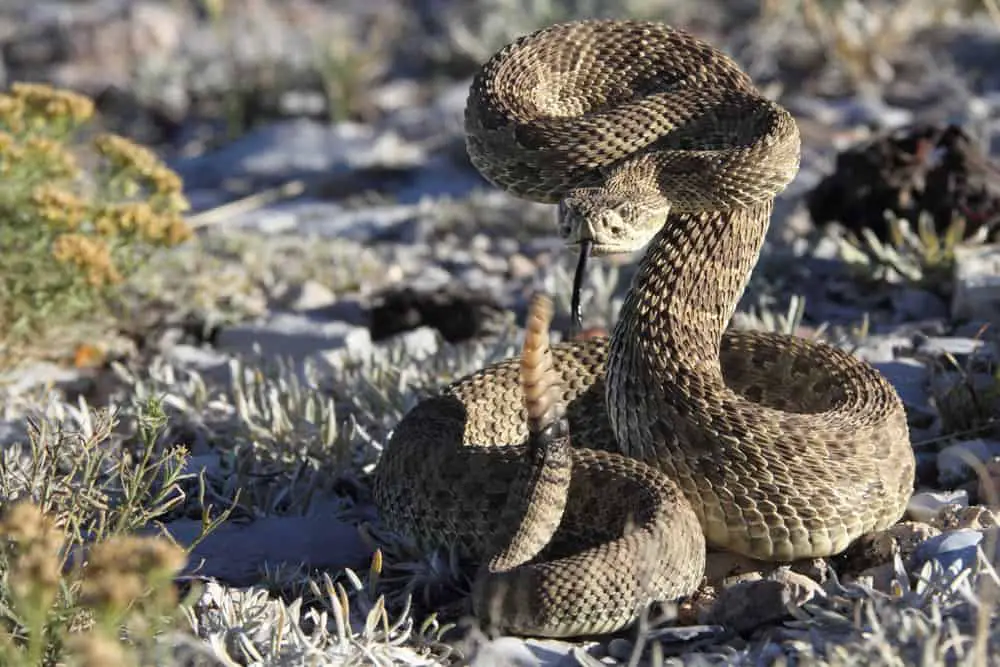
The effects of a viper bite include:
- Changes in blood cells
- Prevents blood from clotting
- Damage blood vessels, causing them to leak
- Internal bleeding
- Heart failure
- Respiratory failure
- Kidney failure
4. Anacondas
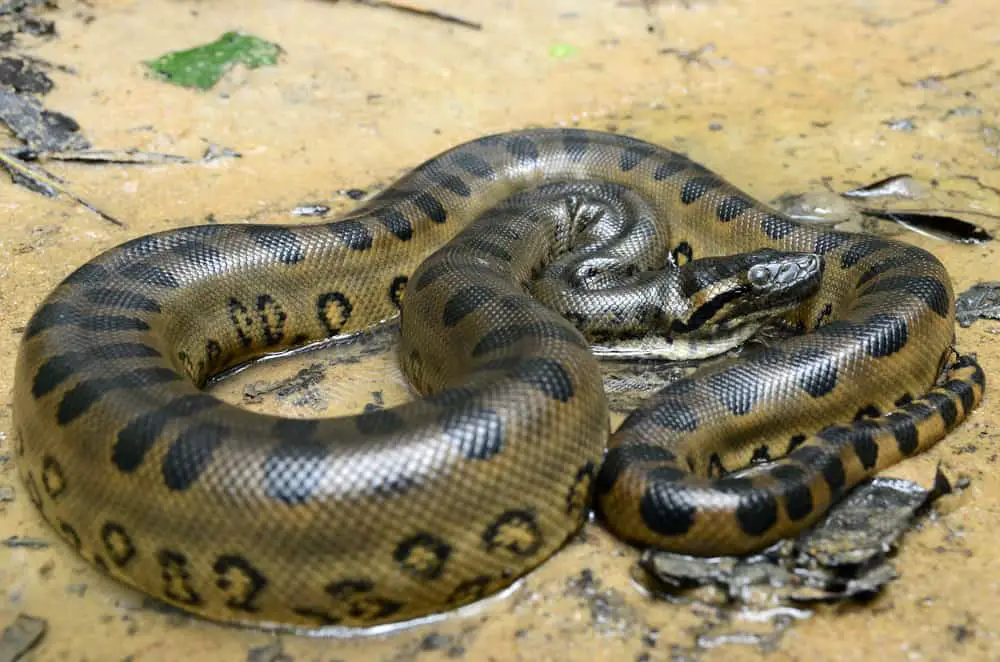
Anacondas are semiaquatic snakes that occur in the tropical region of South America. They are among the world’s biggest snakes and are noted for their swimming abilities.
There are four recognized species of anaconda. They include:
- The Green anaconda
- The yellow or Paraguayan anaconda
- The dark-spotted anaconda
- The Beni or Bolivian anaconda
They are not only genetically different but also different in size and geographic location.
Appearance
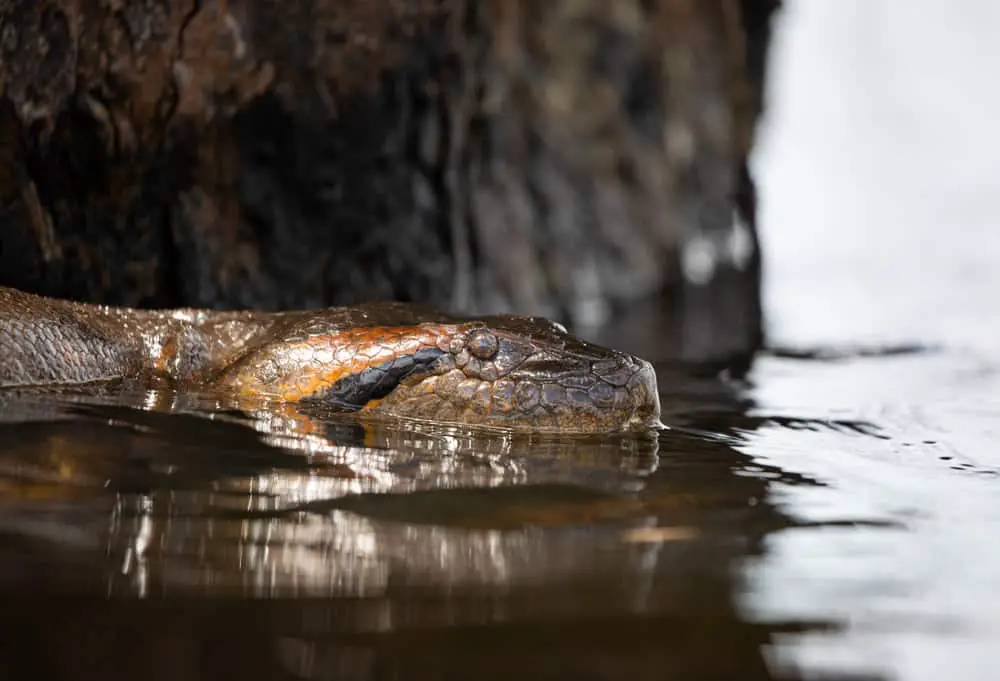
Anacondas are strong, stocky snakes with a thicker body than other boas. Their necks are thick, and their heads are narrow but big. The tops of anacondas’ heads feature their noses and eyes, allowing them to see above the water despite remaining fully submerged. From the eye to the mouth, they feature a broad black line.
Anacondas have tiny, smooth scales that increase in size as they move toward the back of their body. Their skin is flexible and delicate, and they can absorb a lot of water.
Anacondas have spurs on their scales in their cloacal area. Males have bigger spurs than females, despite the fact that females are larger and longer overall. Anacondas, in fact, have the greatest sexual dimorphism (females being bigger than males) of any tetrapod species.
The coloring of an anaconda and its size varies from one species to the next. Their dull, spotted color palettes allow them to blend in with the green, yellow and brown environments of tropical rivers and rainforests.
Habitat
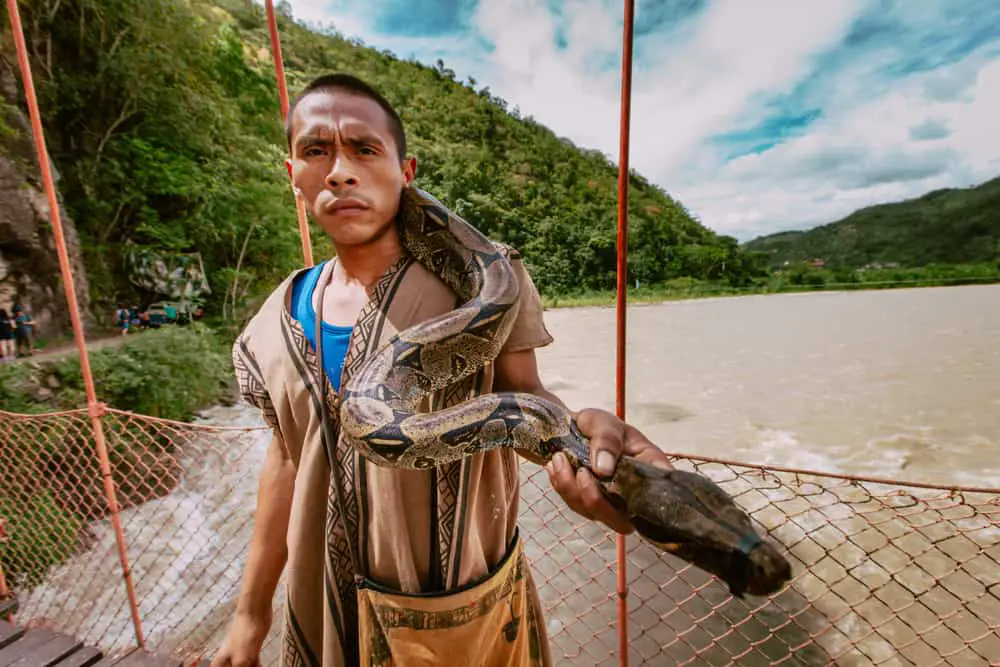
All anacondas are found east of the Andes in South America.
- Green anacondas may be found in the Brazilian Amazon basin, the Orinoco basin, Colombia, Venezuela, Ecuador, Peru, Bolivia, Trinidad, and the Guianas.
- Paraguay, southern Brazil, Bolivia, and northeastern Argentina are home to yellow anacondas.
- Only a small portion of Bolivia is home to the Beni or Bolivian anaconda.
- Brazil and French Guiana are home to the dark-spotted anaconda.
Anacondas may be found in tropical rivers and marshes, as well as rainforests and grasslands. Anacondas flourish in the rainforest’s heat, humidity, and dense vegetation. These snakes spend most of their time swimming or hiding in murky, slow-moving rivers and streams.
Anacondas bask in the sun on branches that dangle above water, which they may easily enter if necessary.
Behavior
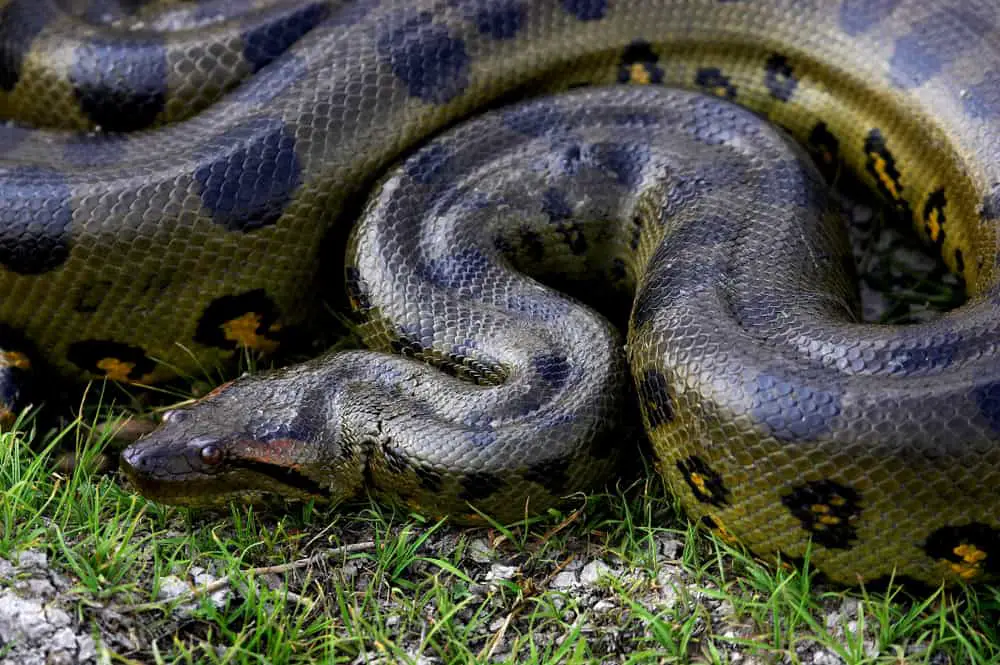
Anacondas are most active late at night and early in the evening. On land, their bulk makes them unwieldy, but in the water, they can move quickly. Green anacondas are solitary snakes with their own home areas.
Snakes that dwell in grasslands may occasionally buy themselves in mud and become dormant during the dry season, demonstrating their adaptability.
Diet
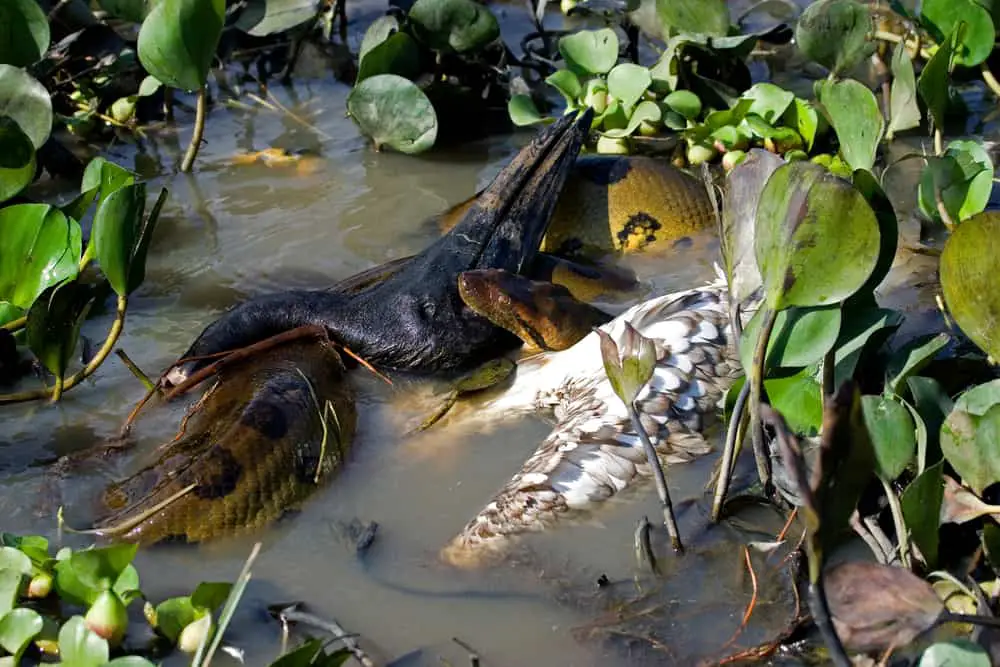
Anacondas consume a wide range of animals. Small snakes eat rodents, lizards, and fish, whereas adult snakes eat caiman, capybara, and even jaguar. Male anacondas are occasionally eaten by females.
Green anacondas are apex predators, meaning they are at the top of their food chain. Going for huge creatures like jaguars and caimans, on the other hand, can sometimes end in significant injury or death.
Hunting
Anacondas are nonvenomous, as are all boas. Anacondas are venomous snakes that may suffocate their prey. They search for a range of prey items, usually in the dead of night.
Anacondas generally wait for prey to come to drink in rivers along the banks, where the murky waters and their camouflaging coloration obscure them. They then launch an attack. They use their strong, curved teeth to bind their victim and use a constrictive killing method.
The circulatory system is overworked as a result of the squeezing. Ischemia occurs when blood cannot reach the brain, and the animal dies within seconds. Drowning is a common cause of death for anacondas since they generally strangle their victims in the water.
Reproduction
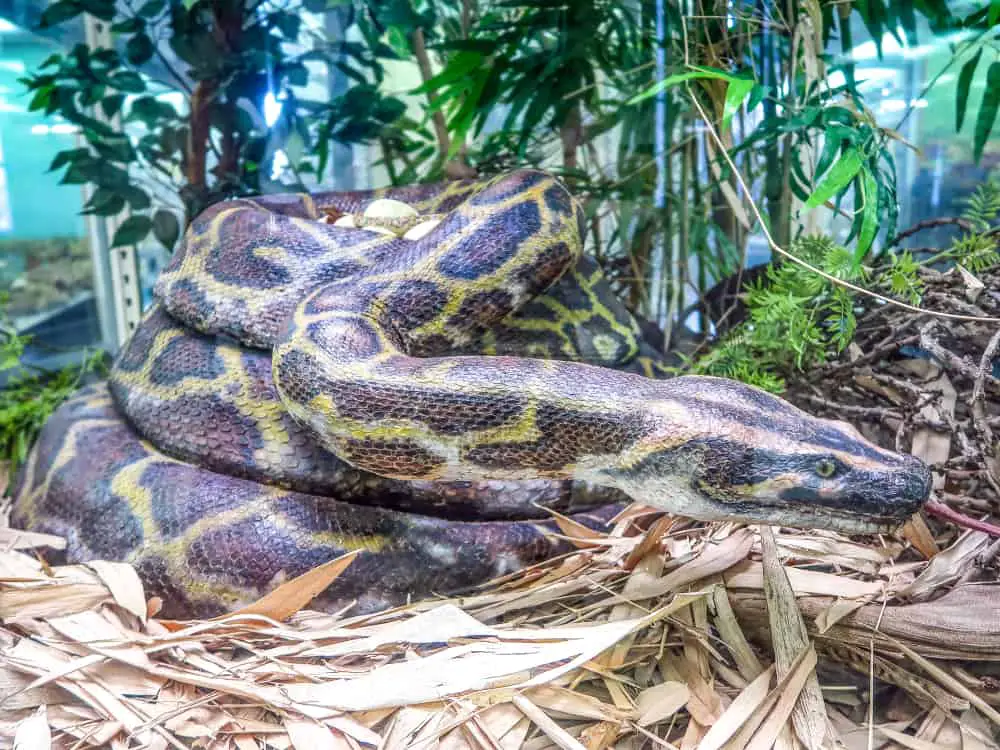
Females keep their embryos inside their bodies for seven months after they have mated. Females do not feed at this period, presumably because hunting involves the danger of injury, which might damage the pups. Green anacondas mate every other year or even less often since carrying offspring needs so much energy.
Conclusion
There are many different types of snakes, and the four types mentioned here are only the most well-known.
Different snakes have different behavioral characteristics. Some, like pythons and anacondas, are constrictors and non-venomous, while others are highly poisonous and can kill in seconds.
References:
Live Science: Anaconda
Live Science: Vipers
Live Science: Pythons



